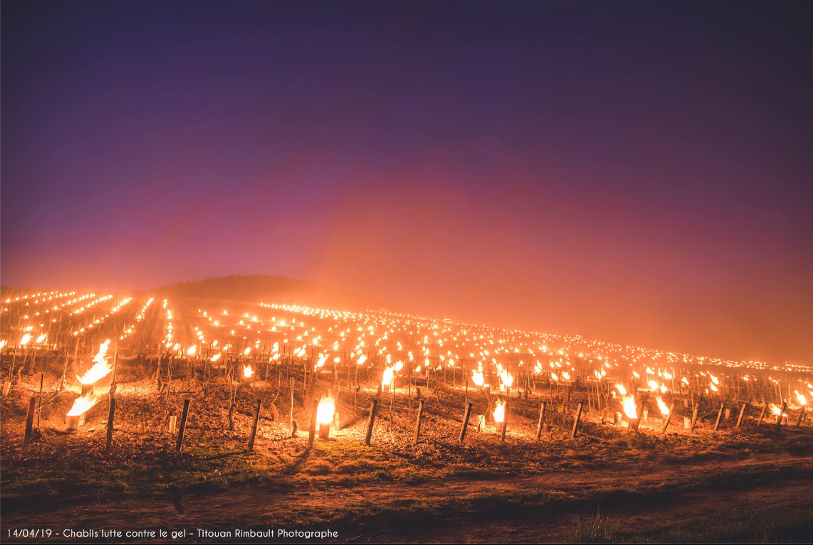Recently my master thesis work in collaboration with my co-authors got published. It concerns an applied problem in the agricultural sector, namely that of mitigating the adverse effects of radiation frost. This is a type of frost that can occur in spring when crops are most vulnerable, resulting in low crop yields and major economic losses.

Extreme measures are taken to combat the effects of these frost events. This is a picture of last year’s April in France. Here, the air temperature is raised by the use of ‘fire pots’. Which, as you can imagine, are very labor-intensive and inefficient as most warm air escapes due to convection. However, this is still an improvement as otherwise the harvest for the year is lost.
The present: “Towards a physics-based understanding of fruit frost protection using wind machines”
In our work, we’ve investigated another measure that uses the energy contained in a warm air layer just above the crops. This energy is harvested using a large wind machine, which transports the air down towards the crops. This process is depicted below.

This method has been in use for over 50 years and has been studied widely. Our research aimed to get a better physics-based understanding by combining high-resolution 3D simulations and improved temperature measurement methods. An example of such a simulation is shown here. The turbulent downward flow created by the wind machine is visualized as it makes a 360-degree turn. The domain size is 700 m cubed.
If you want all the details and our findings, the open-access article can be found here. The code as used in the paper can be found here.
The future: “Clarity on Fruit Frost”
Skipping all that, the future of ‘solving’ this frost problem seems to be one in which the benefits of both high-resolution measurement techniques and corresponding hi-res simulations are combined across all the different protection methods. Precisely this will be done over the next 5 years using a newly awarded grand received by my co-authors. The interdisciplinary team will focus on developing new types of sensors, and be bringing novel simulation techniques to other protection methods (e.a. the fire pots) to gain new insights. Hopefully, with the result that within 10 years time night frost is a problem of the past.
PS. I am not actively involved in the project anymore, for the latests updates see the TU Delft Clarity in fruit frost website.
PPS. Apart from the economic effects that radiation frost causes, it also has a major effect on the family life of a farmers’ family. In a recent episode of ‘onze boerderij’ (Dutch) by Yvonne Jaspers, a behind the scenes is given at a farmers’ family during a night frost. It starts at around the 10-minute mark.